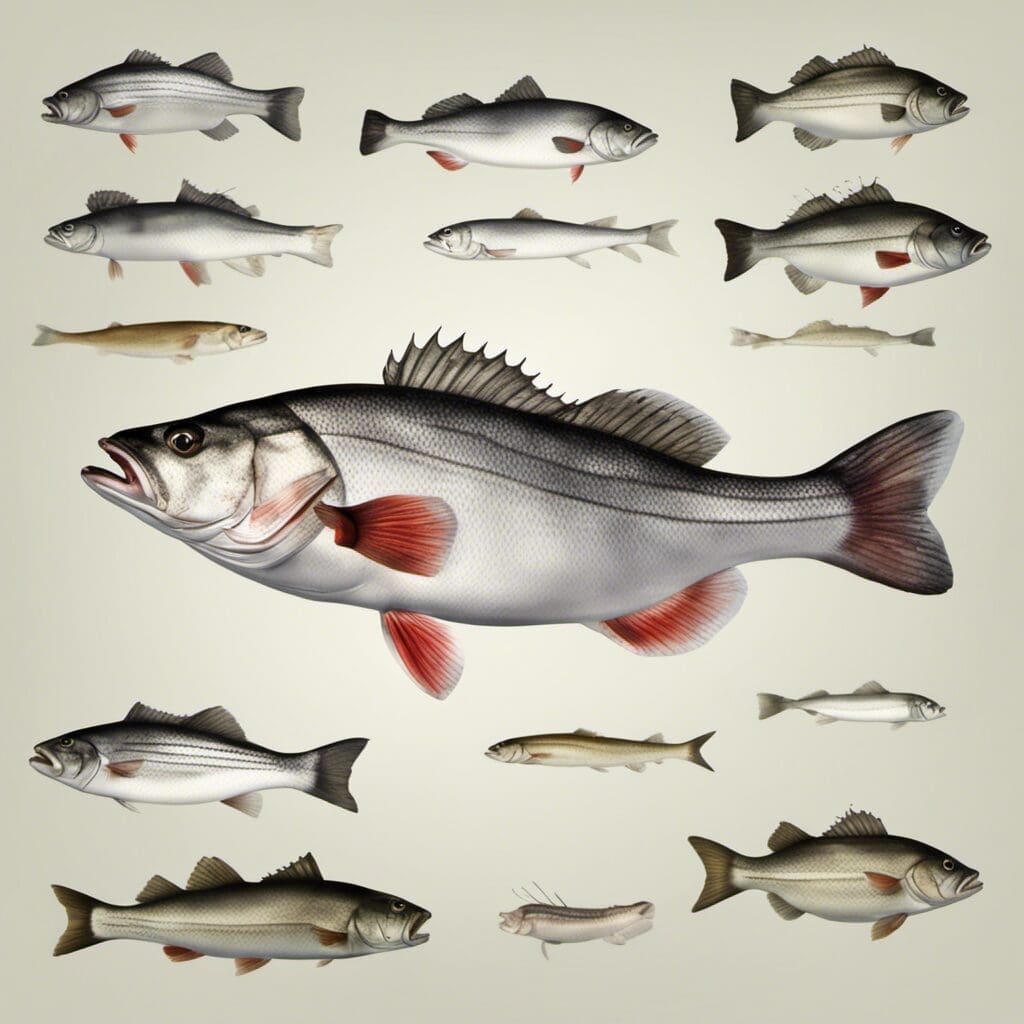Introduction
The Seabass (Dicentrarchus labrax), also known as the European seabass, is a member of the Moronidae family.
Conservation Status
The European seabass is currently classified as “Vulnerable” on the International Union for Conservation of Nature (IUCN) Red List. Efforts to conserve the species include restrictions on commercial fishing and measures to protect its habitats.
Statistics
| Length (Average) | 50cm |
|---|---|
| Length (Range) | 30cm – 100cm |
| Weight (Average) | 5kg |
| Weight (Range) | 2kg – 15kg |
| Average Lifespan | 15 Years |
Distribution
The European seabass is predominantly found throughout the coastal waters of northern Europe and the Mediterranean Sea. Seasonal migrations are common, with the species moving to cooler waters in the summer and warmer waters in the winter.
Habitats
The European seabass prefers brackish and marine environments within a depth range of 20-100m. It thrives in waters with temperatures between 10-20°C.
When and Where to See
The species can be commonly seen along western Europe coastlines during the summer months especially around dawn and dusk.
Best Fishing Locations
- Brittany, France
- Wexford, Ireland
- Devon, England
- Dorset, England
- Algarve, Portugal
- Gibraltar, Spain
- Ligurian Sea, Italy
- Adriatic Sea, Italy
- Aegean Sea, Greece
- Mediterranean Sea, Cyprus
If specific locations aren’t known, look in areas with rocky seafloors or alongside underwater foliage as these are typical habitats of the seabass.
How to Catch
Anglers find that lures like plugs, spoons, and ragworms work best for catching European seabass. Fly fishing, trolling, and bottom fishing are effective techniques. Fishing is usually most successful in the early morning and late evening.
Identification Guide
European seabass is silver-gray in color with a darker shade on the back and a lighter belly. It has a robust, oval-shaped body marked with golden spots. It is fairly distinguishable from other species due to its pointed head and distinctive lateral line.
Culinary
How to Cook
Seabass can be grilled, fried or roasted. It is also popular in Mediterranean cuisine, often cooked with olive oil, tomatoes and herbs.
Taste Profile
Its meat has a delicate flavor and moderately firm texture which is both sweet and savory.
Nutritional Information
It provides a good source of protein, omega-3 fatty acids, and is low in fat.
Recipes
European seabass is frequently included in dishes like bass ceviche, grilled bass with lemon butter, and bass curry.
Additional Information
Behavior
European seabass feeds on a diet mainly comprised of crustaceans, mollusks, and smaller fish. The species spawns during late winter to early spring.
Predators and Threats
Natural predators of the European seabass include larger fish and marine mammals. Human-induced threats mainly involve overfishing and habitat degradation.
Cultural/Historical Significance
Seabass has a significant role in Mediterranean culture and has been depicted in ancient Greek and Roman mosaics.
References and Further Reading
- FishBase
- British Sea Fishing
- World Sea Fishing

